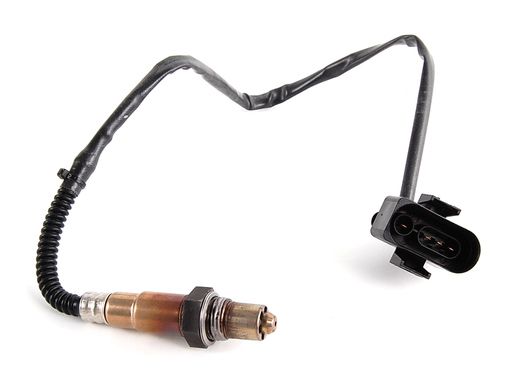The oxygen sensor is a small but vital part of your engine, and one of the important parts responsible for keeping your car’s MPG as low as possible. Oxygen sensors are also known as O2 sensors, lambda sensors, lambda probes or EGO (exhaust gas oxygen) sensors.
What is the oxygen sensor? It is a small sensor found in your vehicle’s exhaust system, usually on cars with petrol engines. The sensor measures the concentration of oxygen that is found in the exhaust gases, allowing the vehicle’s electronic control unit (ECU) to control the efficiency of the combustion process in the engine.
 This thumb-sized part is a key component of the total performance of a vehicle. By continually determining the amount of oxygen in the exhaust, the ECU is then alerted to adjust the air and fuel ratio to improve combustion, performance and efficiency, and also reduce harmful emissions.
This thumb-sized part is a key component of the total performance of a vehicle. By continually determining the amount of oxygen in the exhaust, the ECU is then alerted to adjust the air and fuel ratio to improve combustion, performance and efficiency, and also reduce harmful emissions.
If a faulty oxygen sensor cases the engine to “run rich”, which is usually the case, then this will also increase the load on the catalytic converter, causing it to fail early – an expensive item which you really want to last as long as possible.
Well-known German firm Bosch, a leading manufacturer of oxygen sensors, have found that two-thirds of all vehicle emissions test failures are a result of worn out oxygen sensors, which are relatively inexpensive parts to replace (depending on the car of course – they can be under £30 for a Ford Focus, but over £70 for an Audi).
What are the common signs and symptoms that your vehicle needs an oxygen sensor replacement, before it becomes an MOT fail?
- You notice that you’re suffering from excessive fuel consumption.
- You smell a stronger-than-normal petrol smell from the exhaust.
- The engine surges, hesitates or cuts out when idling.
- There is a premature failure of the catalytic converter.
- The emissions report shows an increase in emissions so they’re approaching the allowed limit (the “lambda” reading on the report).
If you can find it, take a look at the oxygen sensor itself. If you notice that there is a shiny deposit on the heat shield, or any kind of gummy or gooey deposit, it means that you should replace your oxygen sensor as soon as possible.
If you feel you may have a problem with your car’s oxygen sensor, bring it to Triggs in Brentwood for a looking at before it ruins your catalytic converter and costs you 10 times the price of the sensor.
